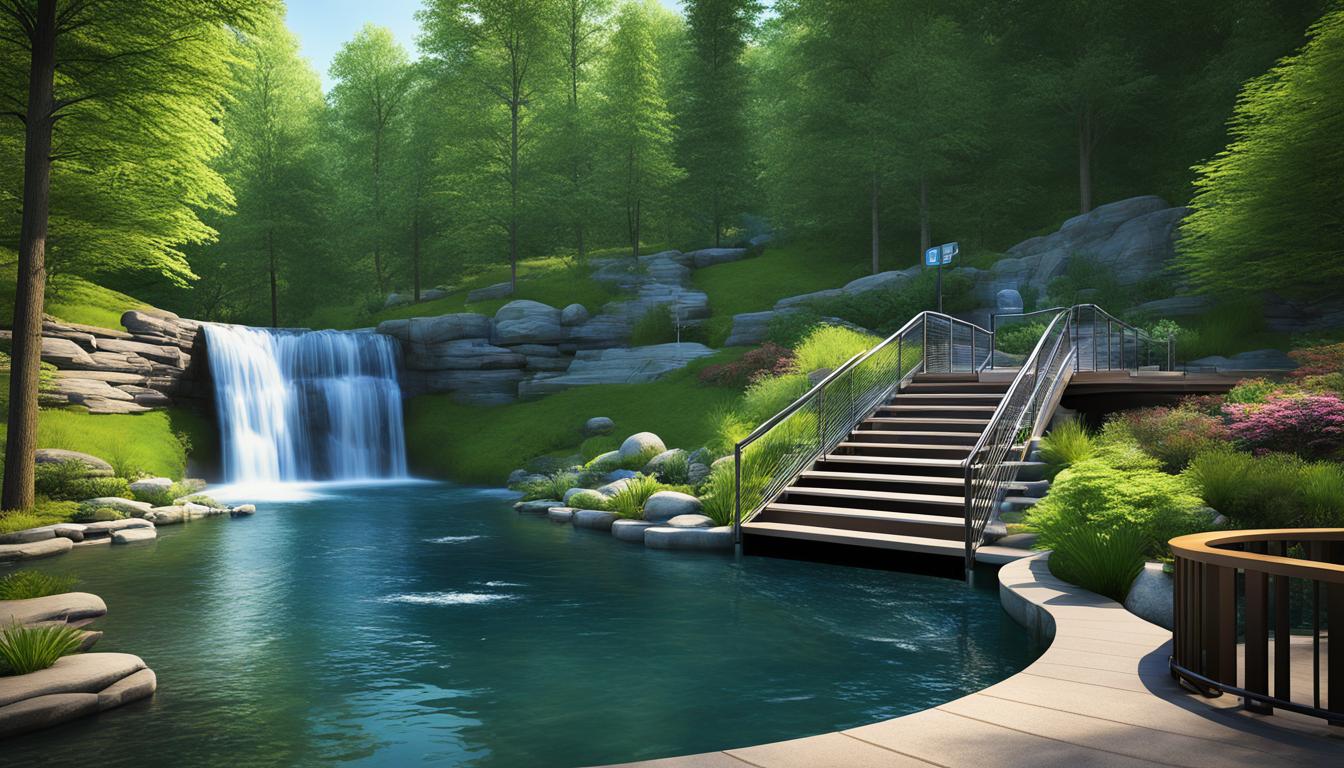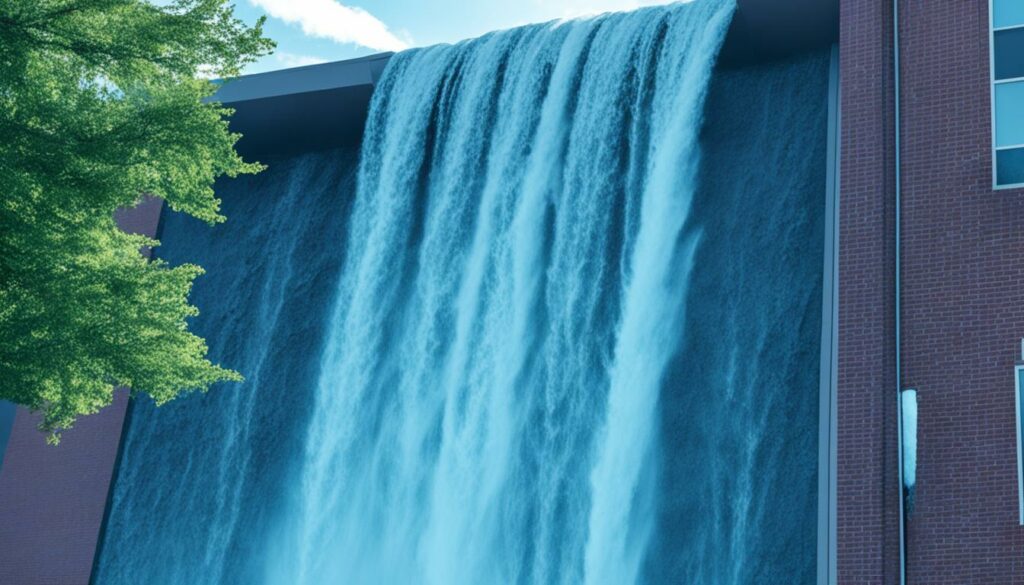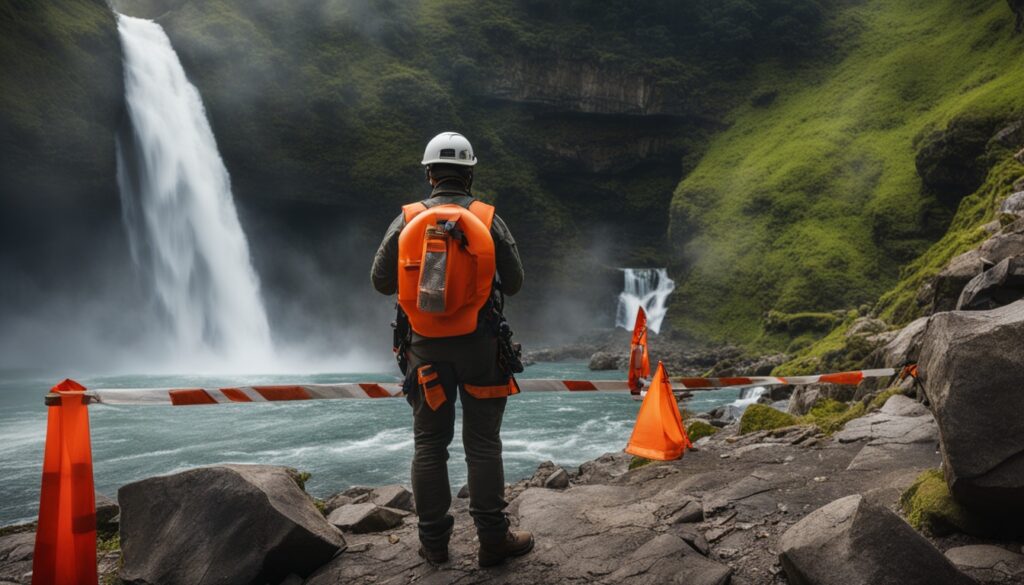
Water features, such as lakes, ponds, and waterfalls, have long been cherished in landscape design for their natural beauty and tranquil ambiance. Despite their serene appearance, the process of building these backyard water features demands meticulous planning and consideration to ensure landscape safety. By following essential waterfall safety tips, homeowners can avoid common pitfalls, safeguard their local ecosystems, and create a stunning, sustainable water feature.
One of the primary steps in constructing a waterfall is understanding the underlying design principles and safety measures. Proper waterfall construction begins with thorough research and preparation, helping to prevent environmental harm and potential safety hazards. To delve deeper into creating a harmonious and secure water feature that complements your outdoor space, explore various design ideas and safety guidelines here.
It's also crucial to use durable materials and integrate water-tolerant plants that support both the aesthetic and functionality of your waterfall. By taking these steps, you can enhance the overall safety and longevity of your installation, making it a safer attraction for both family and visitors.
Understanding the Basics of Waterfall Construction
When embarking on a new waterfall construction project, it is vital to harmonize the design with the client's desires and the property's landscape. Ensuring garden safety and sustainability should be at the forefront of any planning stage. The initial step involves understanding the intended use of the water feature, whether for aesthetics or ecosystem support, and selecting the appropriate type, such as pondless waterfalls or those with open basins.
Planning and Design
Effective planning water features requires anticipation of necessary materials and tools, considering the correct dimensions to avoid common mistakes. Proper depth and appropriate placement are essential in circumventing issues during the waterfall construction process. Additionally, take into account maintenance requirements to ensure long-term functionality and visual appeal. A well-thought-out design not only enhances the aesthetic value but also promotes garden safety.
Materials and Tools Needed
Gathering the right materials and tools is fundamental to successful waterfall construction. Essential items include:
- Pump and tubing suitable for your specific waterfall type
- Rocks and stones to create a natural look
- Filtration systems to maintain water quality
- Sealers and liners to prevent leaks
- Shovels and digging tools for preparing the site
By utilizing the right materials and tools, you can streamline the waterfall construction process, ensuring it aligns with garden safety standards and aesthetic goals.
Common Mistakes and How to Avoid Them
Building a waterfall in your garden can be a rewarding DIY project, but it comes with its fair share of challenges. Understanding and avoiding common construction mistakes can greatly enhance your success and enjoyment.

Not Digging Deeply Enough
One of the prevalent common construction mistakes is not digging your waterfall deeply enough. Insufficient depth can lead to water evaporation or stagnation, disrupting the water flow and overall aesthetics. Ensuring proper depth helps in maintaining a consistent water level and prevents issues related to water loss.
Ignoring Underground Utilities
Another critical error is neglecting to check for underground utilities before commencing any excavation work. Striking underground utility lines can not only cause significant disruptions and delays but also pose serious safety hazards. Always consult local utility maps and services to identify underground lines beforehand.
DIY Electrical Work
While DIY projects can be fulfilling, handling electrical installations for water features can be dangerous if not done correctly. Inappropriate DIY electrical work can lead to fines, property damage, or even severe injuries. It's prudent to hire a licensed electrician to handle all electrical installations to ensure safety and compliance with local regulations.
By being mindful of these waterfall safety tips and conducting proper research, you can smoothly navigate through the construction process. Avoiding these pitfalls will help you to create a beautiful and functional water feature in your garden.
Ensuring Safety for Kids and Pets
Waterfalls and other water features can add a stunning touch to any backyard, but it's crucial to address potential dangers, especially for homes with young children and pets. Garden safety and backyard safety should be top priorities when designing these natural elements.
“Taking the necessary protective measures can transform a potential hazard into a safe and enjoyable part of your outdoor space.”
While fencing might detract from the aesthetic appeal of a waterfall, it is an essential protective measure. In many regions, it is also a legal requirement. Parents and pet owners must understand that even a small water feature can pose a significant risk if proper precautions are not taken.
If fencing is not an option, there are alternatives that can help ensure garden safety without compromising the beauty of the water feature:
- Pond alarms that alert you when someone or something enters the water
- Durable covers that can be placed over the water feature
- Supervision when children or pets are playing near the water
It's also important to familiarize yourself with local regulations regarding backyard safety. These regulations can provide additional guidelines or requirements that ensure the protective measures you implement are effective and compliant.
By prioritizing garden safety, it's possible to create a beautiful and safe environment for your family, without having to compromise on the tranquility and visual appeal that a well-designed water feature brings.
Waterfall Safety Tips
Ensuring the safety of your waterfall requires a multifaceted approach. To start, consider installing barriers to prevent accidental falls. These barriers can be both functional and aesthetically pleasing, blending seamlessly with the natural surroundings.

Clear signage indicating potential hazards around your water feature is paramount. By informing visitors of slippery rocks or deep water, you proactively mitigate risk. Additionally, setting up a regular maintenance schedule is crucial. Consistent checks can identify and rectify issues such as loose stones or malfunctioning pumps before they lead to accidents.
Adopting eco-friendly practices not only protects the environment but also enhances safety. For example, maintaining the natural vegetation around your waterfall supports local wildlife and preserves water quality. This practice can prevent soil erosion, an often-overlooked safety concern.
Lastly, always follow established safety guidelines when constructing water features. consulting with experts or using reliable resources. These comprehensive practices ensure that your beautiful waterfall remains a safe and enjoyable feature in your landscape.
Choosing the Right Location for Your Waterfall
When it comes to landscape planning, selecting the right location for your waterfall is crucial. Proper waterfall placement ensures that this beautiful feature is both functional and visually appealing. Effective location selection requires careful consideration of factors such as visibility, accessibility, and overall integration with the existing landscape.
Avoiding Awkward Placement
One of the biggest mistakes in designing waterfalls is placing them in obscure locations where they remain unnoticed and underappreciated. To avoid awkward placement, ensure the waterfall is visible from multiple points within your property. This not only makes it a focal point but also adds value and enjoyment to your space. By strategically positioning the waterfall, you can enhance the natural beauty of your garden and create a seamless flow with the surrounding elements.
Maximizing Enjoyment and Accessibility
Maximizing enjoyment and accessibility is key to a successful waterfall installation. Think about the different viewpoints from which the waterfall can be enjoyed. For instance, placing it near a patio or deck can offer a relaxing backdrop while entertaining guests or enjoying a quiet evening outdoors. Additionally, consider accessibility for regular maintenance and cleaning to ensure the feature remains in top condition. A well-thought-out landscape planning strategy can significantly impact the usability and aesthetic appeal of your outdoor space.
Conclusion
Embarking on a waterfall construction project is an exciting endeavor that can transform your backyard into a serene oasis. However, this intricate task requires meticulous planning and a strong emphasis on safety. As discussed, understanding the basics, designing effectively, and selecting the right materials are crucial initial steps. Avoiding common pitfalls like shallow digging, ignoring underground utilities, and handling electrical work unprofessionally ensures the integrity and safety of your waterfall feature.
Equally important is considering backyard safety, particularly if children and pets frequent the area. Implementing waterfall safety tips during construction and choosing an appropriate location will enhance both accessibility and enjoyment. Carefully balancing aesthetics and safety can lead to a harmonious integration of the waterfall into your outdoor space.
By adhering to these guidelines, you can create a safe, sustainable, and visually appealing waterfall. Paying close attention to each detail—from planning and execution to safety measures—guarantees a tranquil and secure addition to your backyard. Ultimately, with thorough preparation and thoughtful implementation, your waterfall construction project will yield a beautiful and enjoyable focal point for years to come.








